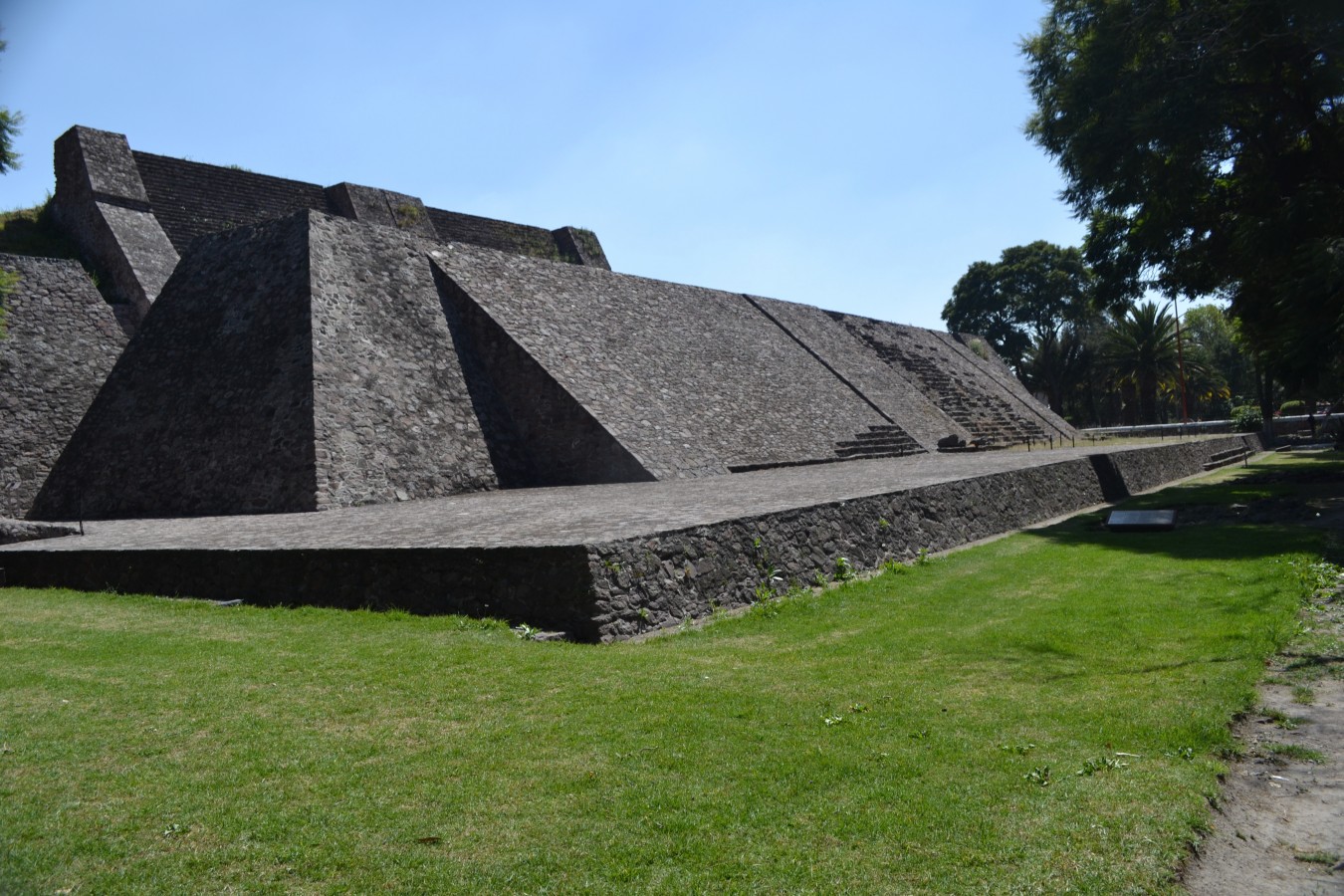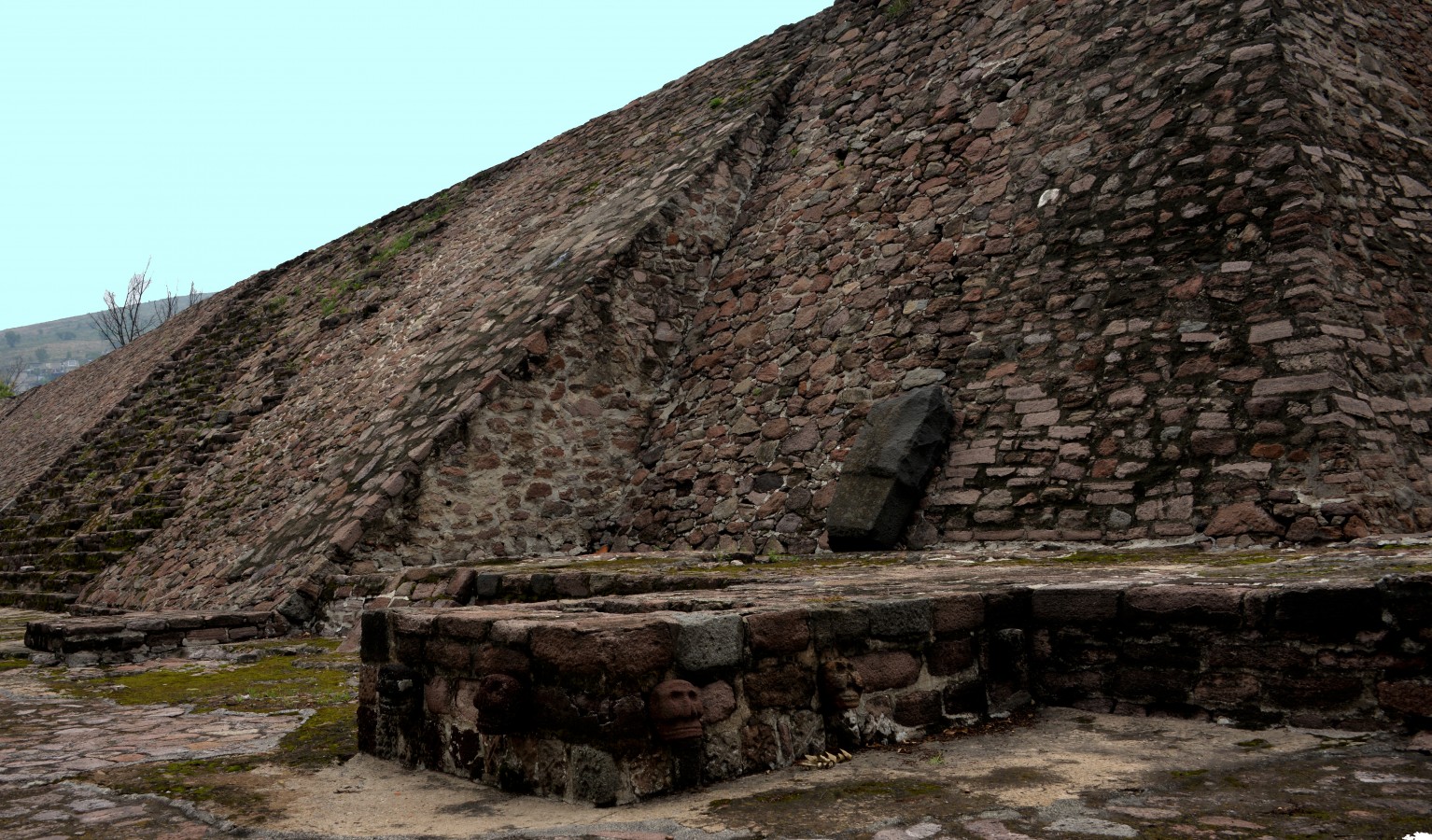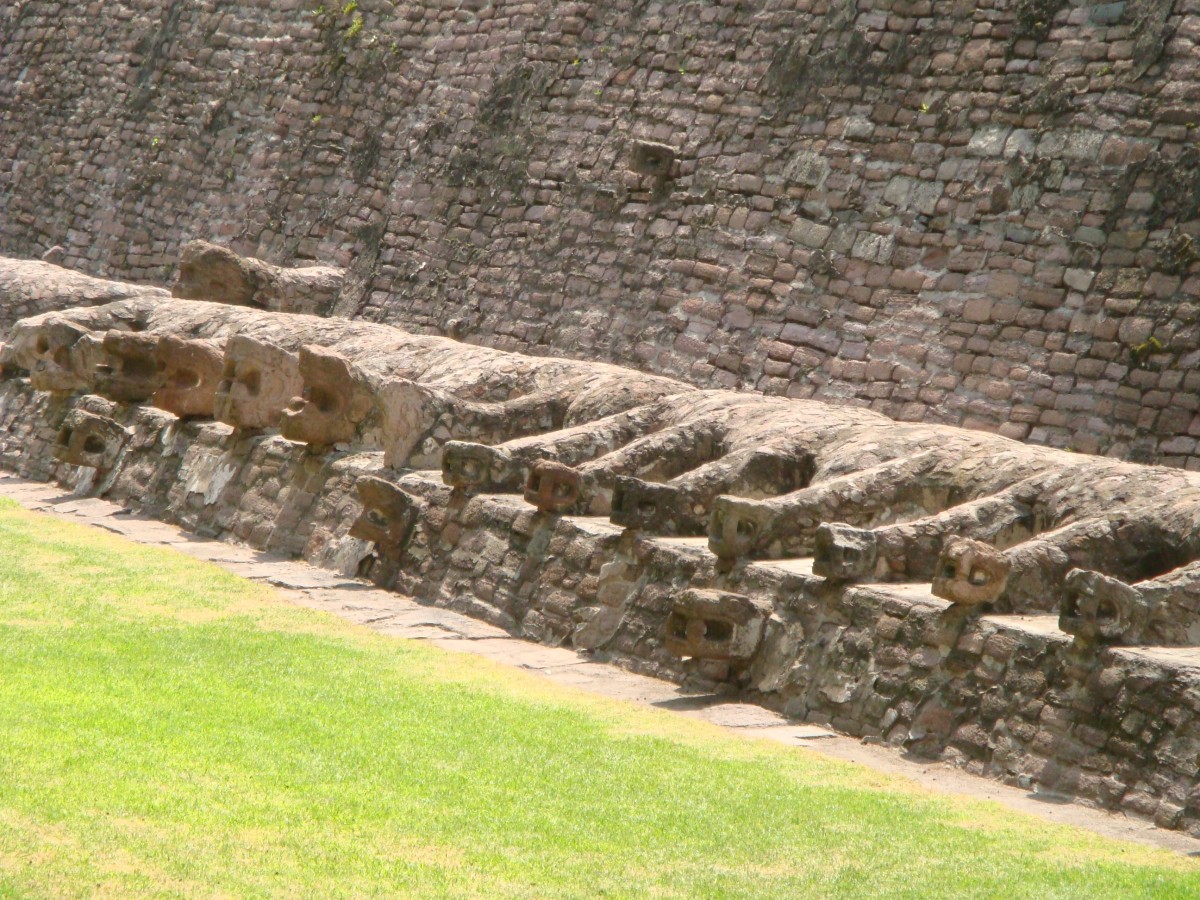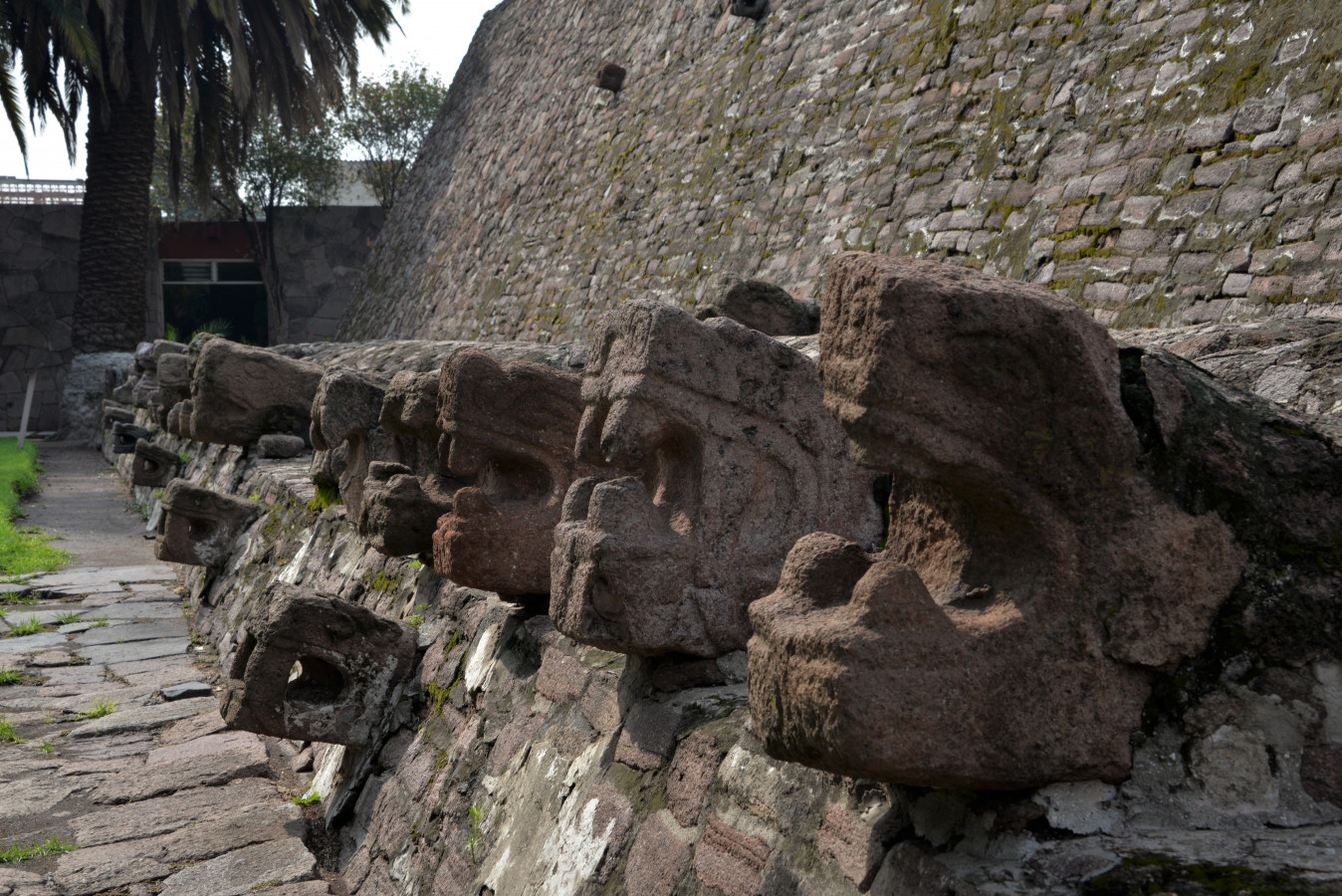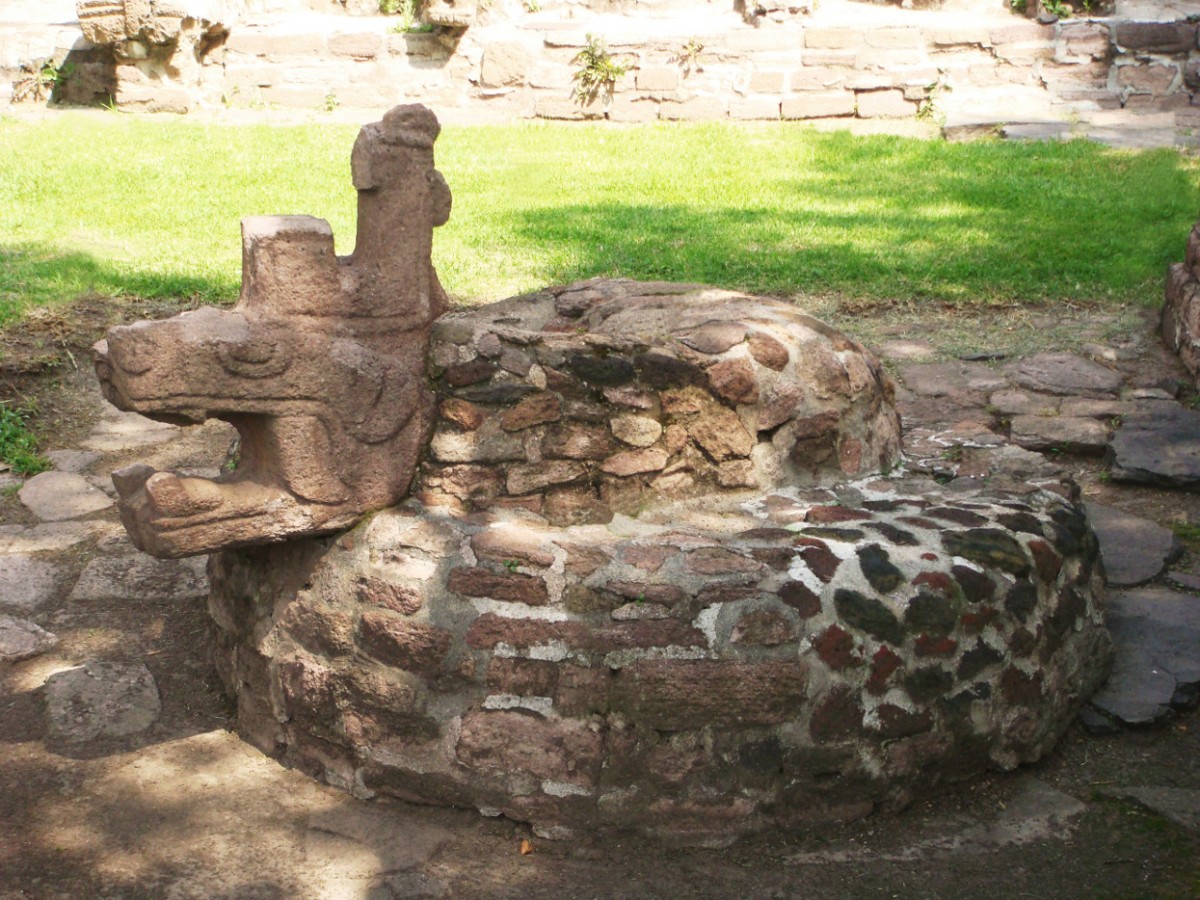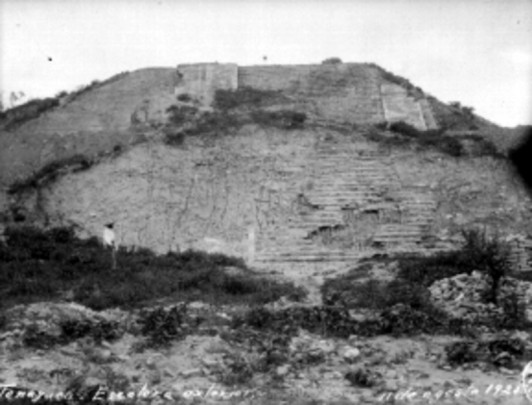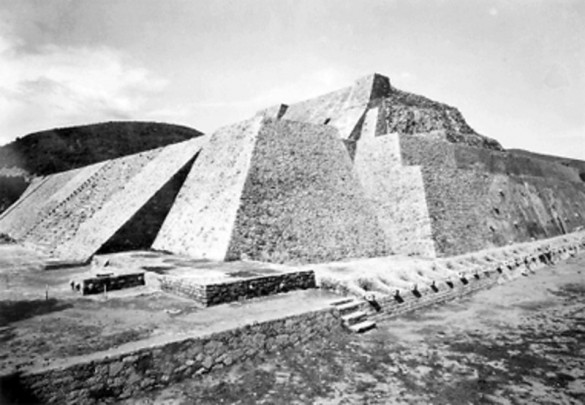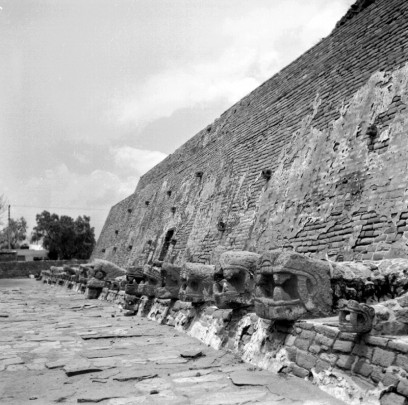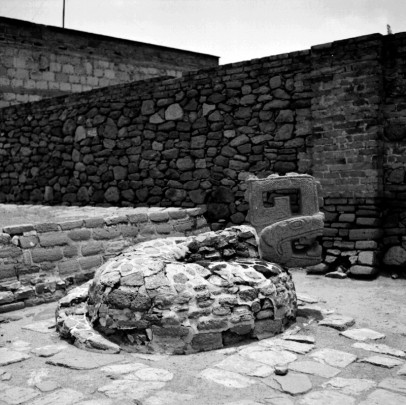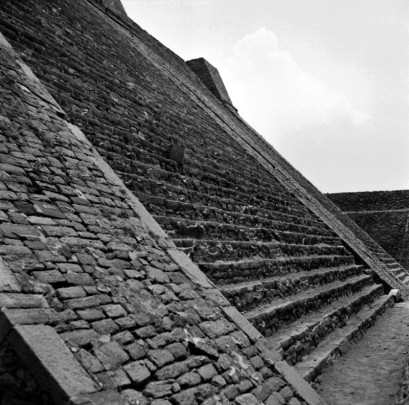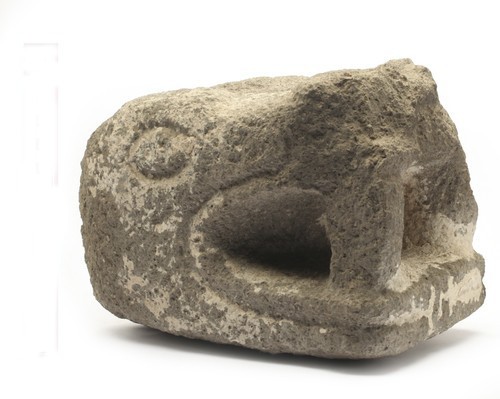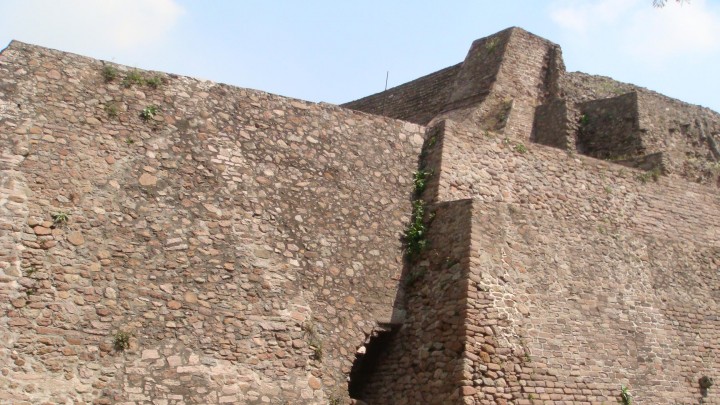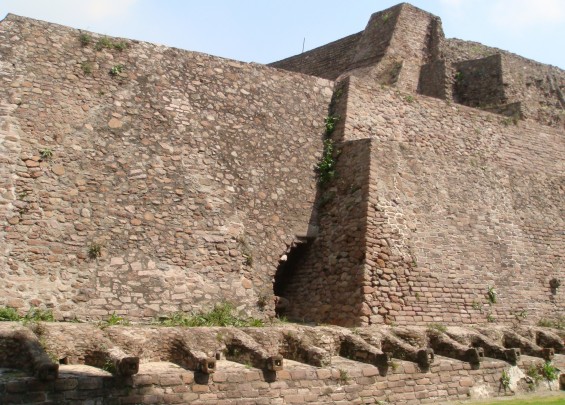Tenayuca
Walled city
First capital of the Chichimecas of Xólotl (end of the twelfth century) until it was moved to Texcoco. It still contains an extraordinary pyramid crowned with twin temples dedicated to Tlaloc and Huitzilopochtli, with glyphs on many steps and surrounded by a wall of serpents.
About the site
The foundation of Tenayuca is attributed to the Chichimec group led by Xólotl in the year 1250. Later, after the Chichimec capital moved to Texcoco, Tenayuca became part of the Tepaneca dominion of Azcapotzalco. Then, in the final part of its pre-Hispanic history, it was closely tied to the Mexica of Tenochtitlan, until the arrival of the Spanish.
Its location on the shore of Lake Texcoco meant its inhabitants had the raw materials to produce salt, whilst the Tlalnepantla and San Javier rivers supplied them with vegetables and fish, as well as sufficient water for farming. Finally, they extracted the stone to build their monuments and homes from the Cerro de Tenayo and other peaks in the Sierra de Guadalupe.
One of the most outstanding characteristics of Tenayuca is its majestic monument surrounded by sculptures of serpents. These may be seen not only on the four sections of the pyramid, but also the base it stands upon. In Bernal Díaz del Castillo's eyewitness account, the True History of the Conquest of New Spain, he notes that on their first journey to Mexico, the Spanish soldiers called Tenayuca the "Town of Serpents." The temple would undoubtedly have caused astonishment, as it is calculated that in its final stage of construction—the one the conquistadors encountered—there were approximately 600 serpent heads embedded in the Great Temple monument. If we add the 140 serpents whose bodies lie on the platform of the Coatepantli, their astonishment must have been all the greater.
Its location on the shore of Lake Texcoco meant its inhabitants had the raw materials to produce salt, whilst the Tlalnepantla and San Javier rivers supplied them with vegetables and fish, as well as sufficient water for farming. Finally, they extracted the stone to build their monuments and homes from the Cerro de Tenayo and other peaks in the Sierra de Guadalupe.
One of the most outstanding characteristics of Tenayuca is its majestic monument surrounded by sculptures of serpents. These may be seen not only on the four sections of the pyramid, but also the base it stands upon. In Bernal Díaz del Castillo's eyewitness account, the True History of the Conquest of New Spain, he notes that on their first journey to Mexico, the Spanish soldiers called Tenayuca the "Town of Serpents." The temple would undoubtedly have caused astonishment, as it is calculated that in its final stage of construction—the one the conquistadors encountered—there were approximately 600 serpent heads embedded in the Great Temple monument. If we add the 140 serpents whose bodies lie on the platform of the Coatepantli, their astonishment must have been all the greater.
Did you know...
- In ancient Mexico, the serpent was one of the animals most closely associated with religious beliefs.
- 140 serpents identified as the species crotalus triseriatus, commonly known as the rattlesnake, are found on the base of the Coatepantli (wall of serpents).
- The fire serpent, or Xiuhcóatl, was associated with the New Fire and the cycles of renewal that occurred every 52 years.
An expert point of view

Beatriz Zúñiga Bárcenas
Centro INAH Estado de México
Practical information
Temporarily closed
Tuesday to Sunday from 10:00 to 17:00 hrs. Last entry 16:00 hrs.
$75.00 pesos
Calle Quetzalcoatl s/n, San Bartolo Tenayuca, municipio de Tlalnepantla de Baz, Estado de México.
Services
-
+52 (55) 5388 6191
-
This email address is being protected from spambots. You need JavaScript enabled to view it.
Directory
Investigadora del Centro INAH Estado de México
Beatriz Zúñiga Bárcenas
beatriz_zuñThis email address is being protected from spambots. You need JavaScript enabled to view it.
+52 (722) 213 9581

